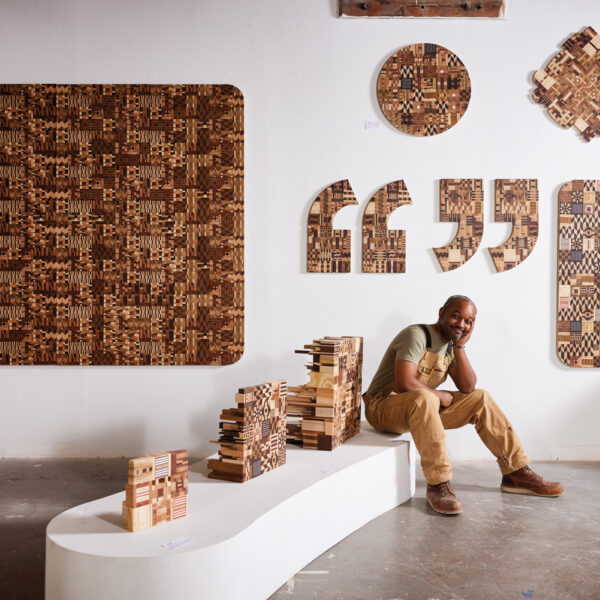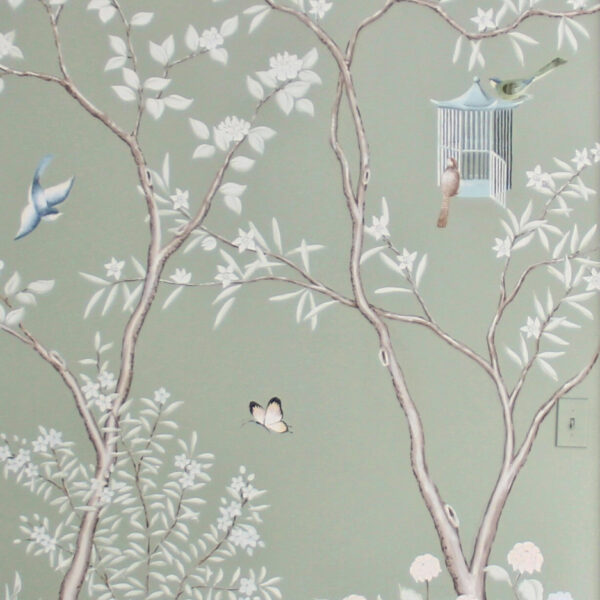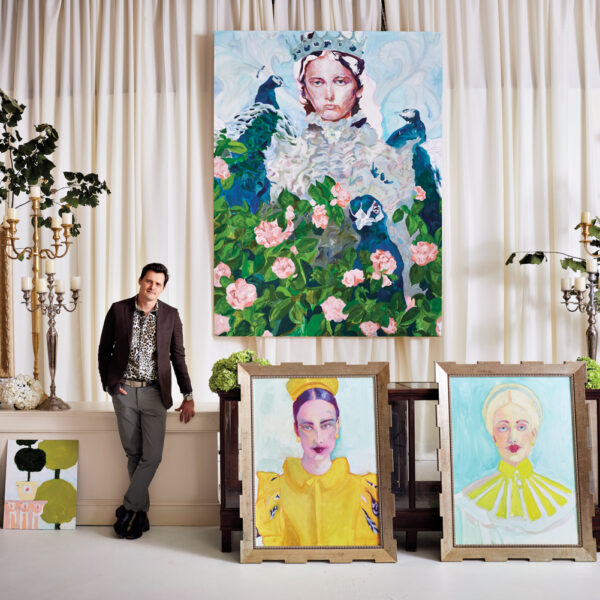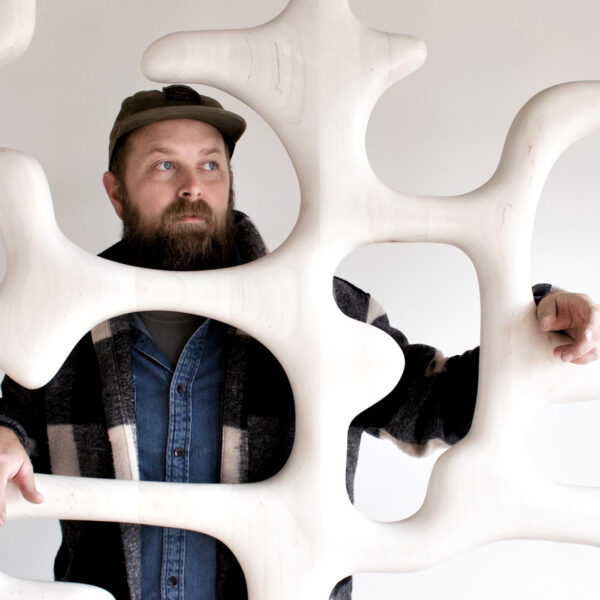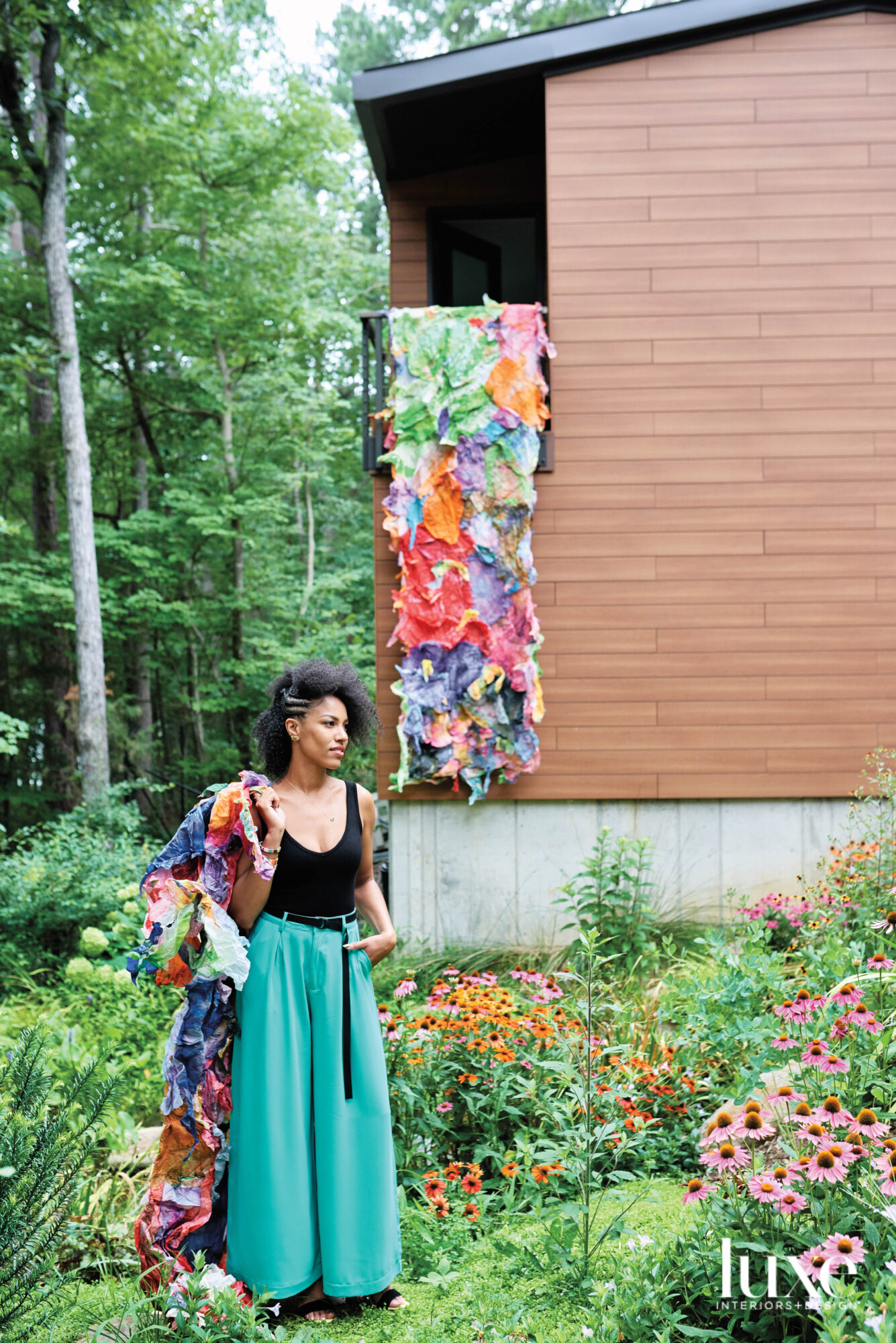
At her home base in Durham, North Carolina, artist Maya Freelon harnesses a kaleidoscope of colors from classic bleeding tissue to create her soft sculptures and prismatic monoprints. Says the artist: “This is an opportunity to uplift a familiar material and demonstrate its power and worth.”
There’s particular pleasure in discovering the beauty in overlooked objects—something artist Maya Freelon learned years ago while searching for inspiration in her late grandmother’s basement. A child of the Great Depression, “she was super resourceful,” says Freelon. “She never threw away anything.” While riffling through rusted irons, antique quilts, photos of James Baldwin and Langston Hughes first editions, Freelon unearthed something that excited her even moreso: a stack of water-stained tissue papers, their hues having bled together to mesmerizing effect. Where some may have seen ruined craft supplies, Freelon found the insight that would come to define her practice: reimagining these humble watermarks for prismatic monoprints and soft sculptures.
Only classic bleeding tissue allows Freelon to extract the ink. In lieu of brushes, the artist presses, drips and squeezes wet sheets across clean artist paper, forming dramatic gestures such as watery swirls, glass-like cracks and spinning vortices achieved with the aid of a pottery wheel. Freelon then seals each composition with a protective topcoat before repurposing the leftovers for elaborate sculptures and cascading tissue quilts inspired by her grandmother and grand-aunt’s preferred handicraft.
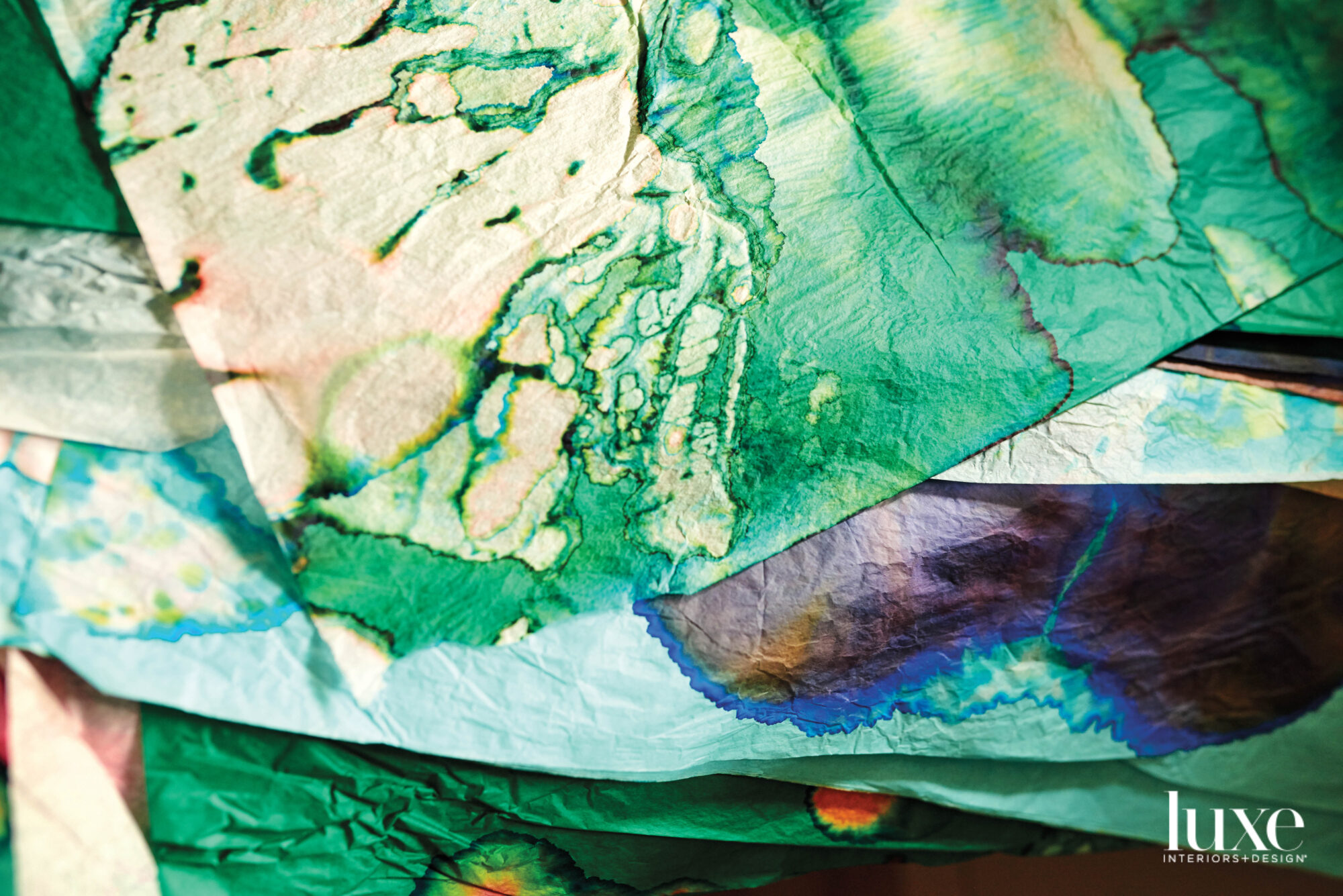
A stack of recently-bled, then dried tissue papers mingles atop a work table in the studio her father, famed architect Phil Freelon, designed.

A stack of recently-bled, then dried tissue papers mingles atop a work table in the studio her father, famed architect Phil Freelon, designed.
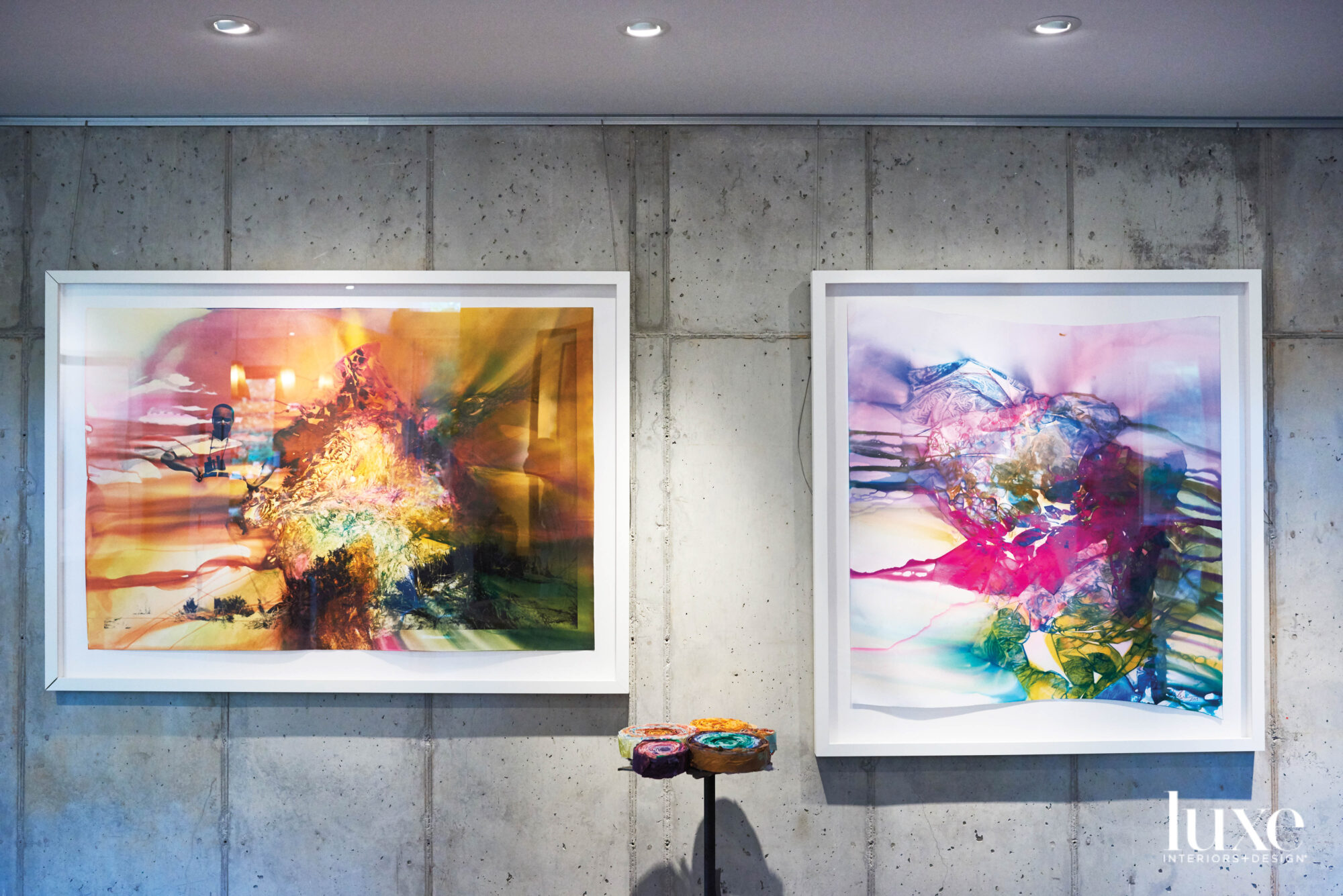
Installed in her private North Carolina gallery, the artist’s tissue-ink monoprints explore the breadth of abstraction.

Installed in her private North Carolina gallery, the artist’s tissue-ink monoprints explore the breadth of abstraction.
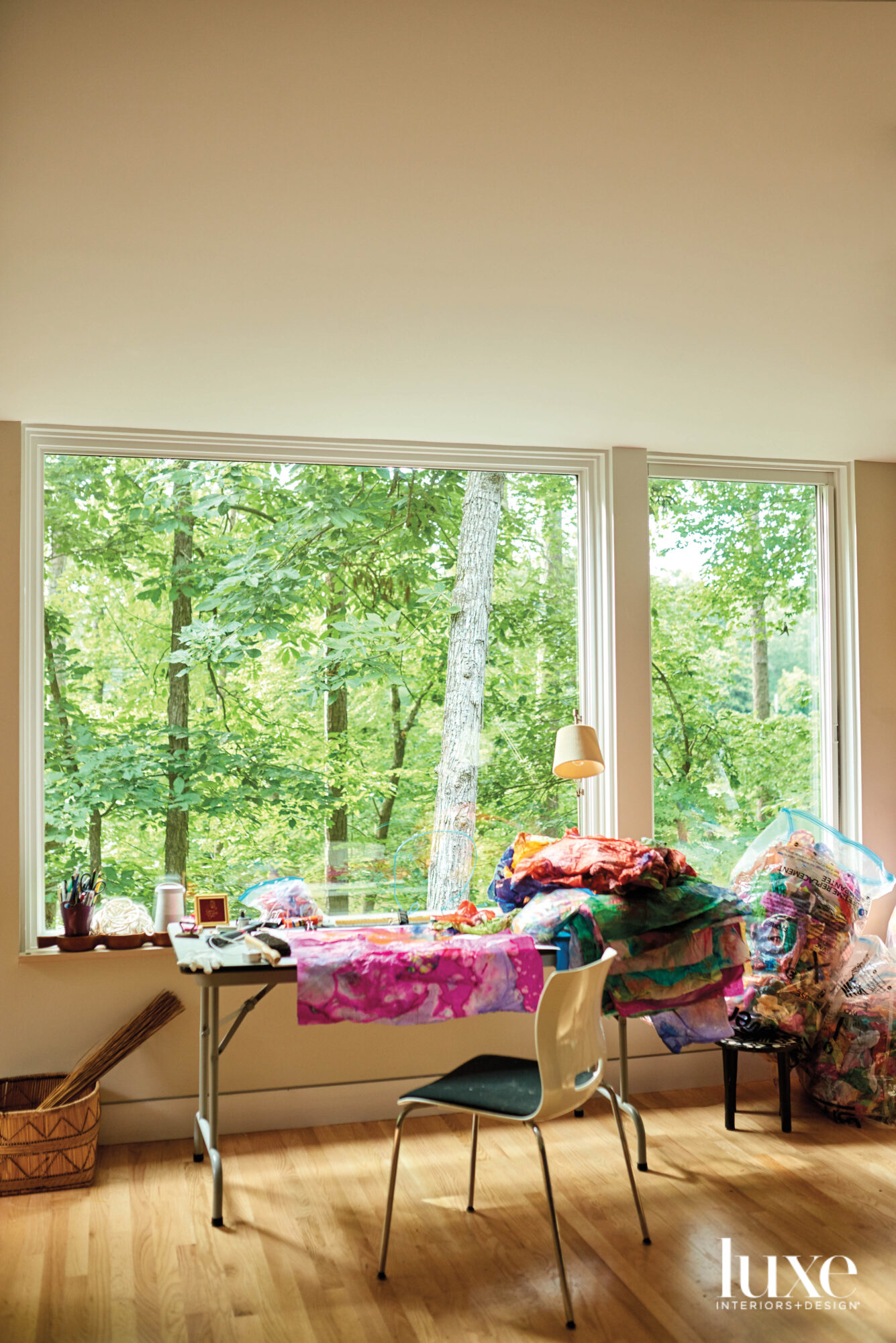
A stack of bleeding tissues decorates artist Maya Freelon’s work table in Durham.

A stack of bleeding tissues decorates artist Maya Freelon’s work table in Durham.
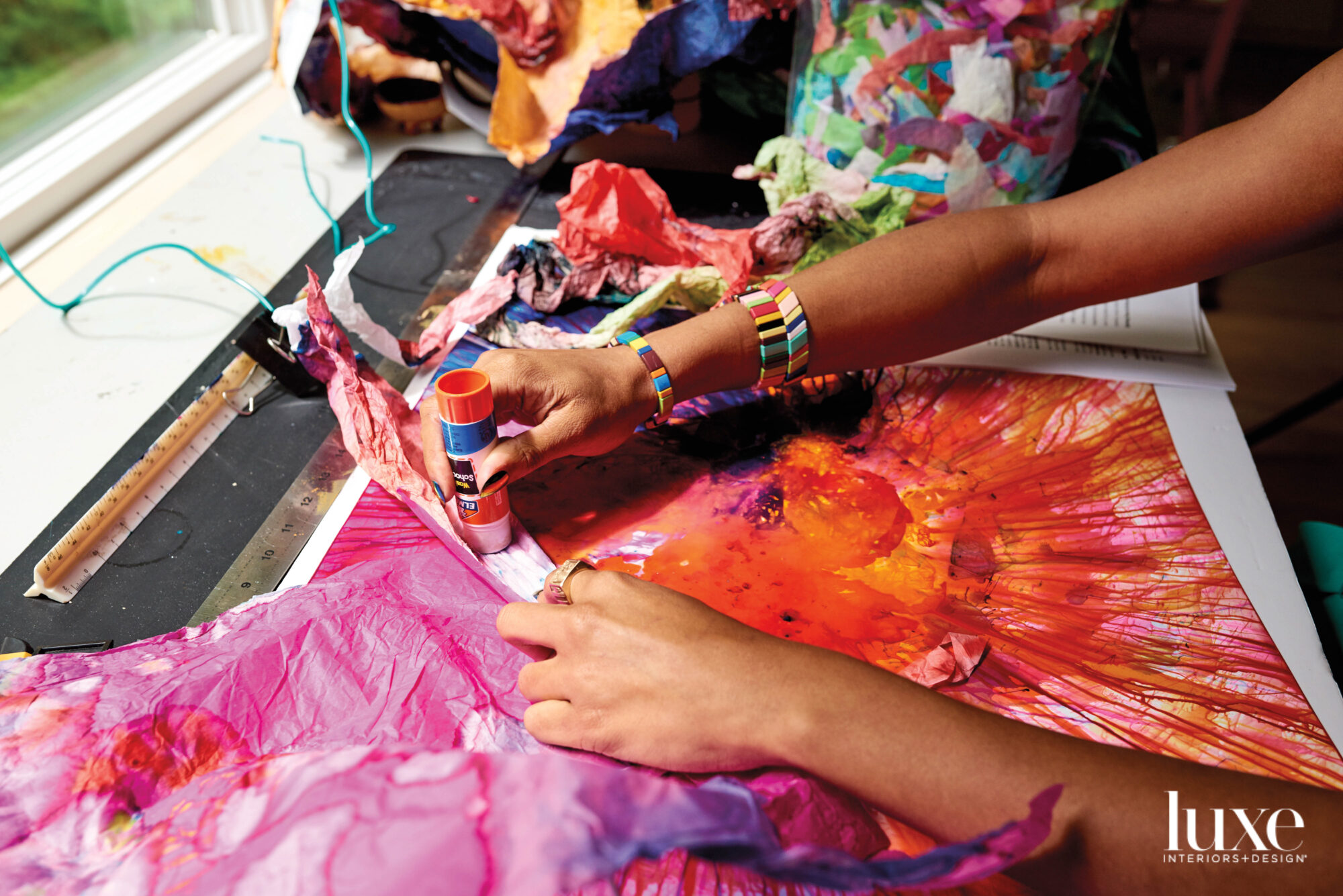
Freelon employs a humble tool—the glue stick—to help assemble her dramatic tissue-paper quilts.

Freelon employs a humble tool—the glue stick—to help assemble her dramatic tissue-paper quilts.
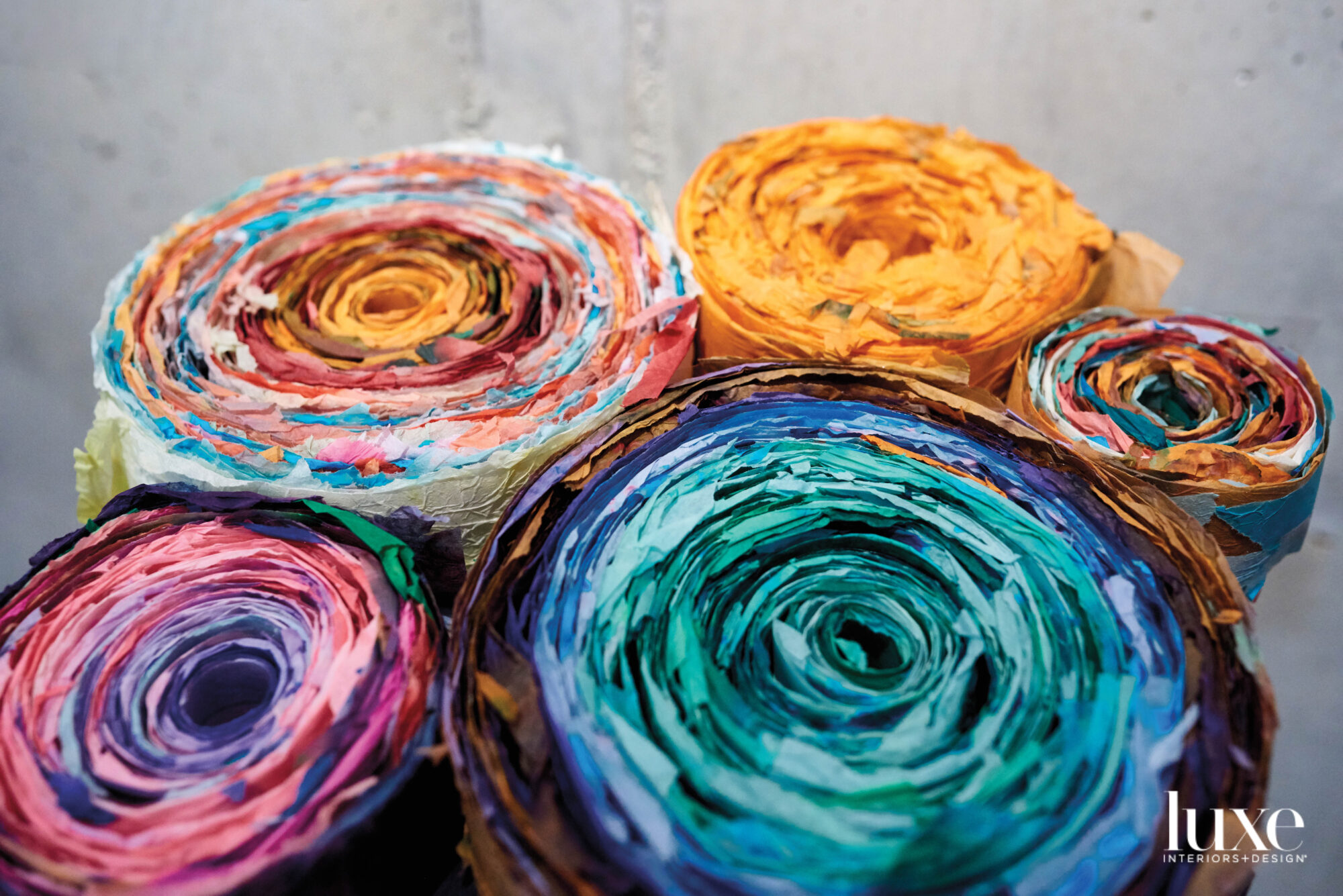
Thousands of tiny tissue paper scraps are used to compose her tightly wound spiral sculptures.

Thousands of tiny tissue paper scraps are used to compose her tightly wound spiral sculptures.
“It’s part of African-American tradition: taking discarded or overlooked things and creating something beautiful,” Freelon explains. Due to their humble origins, repurposed works too often were seen as disposable, she furthers. “There is a hierarchy in art; I’m trying to challenge that.”
For the artist, who counts author Maya Angelou as her godmother and namesake, each piece is entwined with ancestral reverence. “What I’m creating feels bigger than me,” affirms Freelon, crediting the African-American forebears who helped forge her creative path. Since returning to her hometown of Durham, North Carolina, these influences have grown even more profound. Here, her works are displayed in a private gallery designed by her late father, Phil Freelon—renowned architect behind the National Museum of African American History and Culture in Washington, D.C.—while she shares a work space with her mother, Grammy-nominated jazz singer and composer Nnenna Freelon.
Familial legacy comes to the forefront with Freelon’s prismatic monoprints, which tribute African-American photographic portraiture by draping her subjects’ faces in illuminating color. Some depict long-deceased relatives first captured by Freelon’s great-grandfather, pioneering painter Allan Randall Freelon. Others reinterpret turn-of-the-century captures of unknown origin, culled from antiques shops or public-domain databases. Although their identities remain uncertain, Freelon says she’s most moved when the works make black viewers feel “immediately called to their own ancestors.”
These ruminations form the heart of the artist’s current exhibition at CAM Raleigh through February 14, which pushes the potential of Freelon’s chosen medium but also questions “how we attribute value,” she notes. All told, there’s one thing she feels certain of: Her grandmother would approve.

